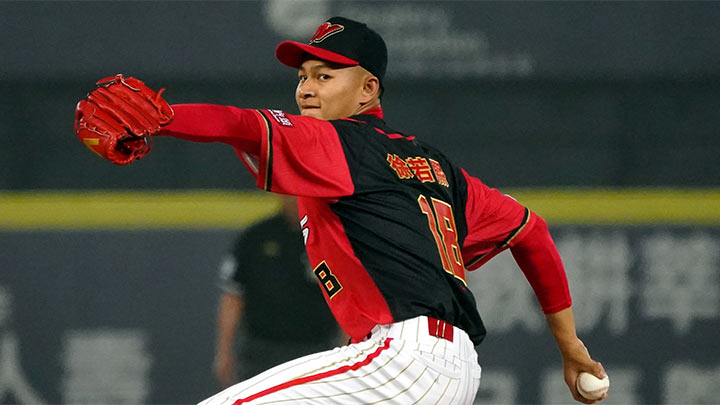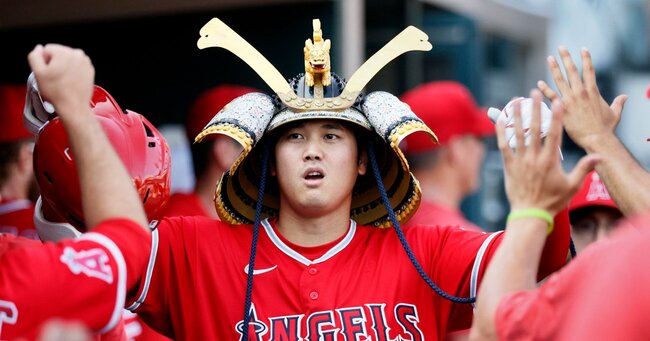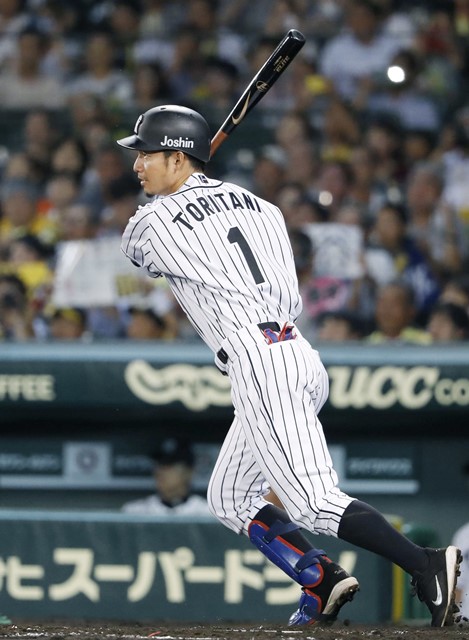
In baseball, the pitcher is a key player in determining the outcome of a game.
Effective training is essential to maximize a pitcher’s performance.
This article provides detailed information on “Baseball Pitcher Training” and explains specific methods to improve your pitching skills.
Pitcher training covers a wide range of areas, including strengthening physical strength and muscle strength, improving pitching form, utilizing mechanics and biomechanics, pitching types and strategies, core training and improving flexibility, nutrition management, and recovery and care methods.
By understanding and practicing the key points of each training, you can significantly improve your ability as a pitcher.
Through the various items introduced below, we will cover a wide range of topics, from the basics of pitcher training to advanced techniques.
We provide information that will be useful to all pitchers, from professionals to amateurs, so please use it as a reference.
目次
Pitcher training basics
Proper training is essential to perform well as a pitcher.
Here we will explain in detail how to improve the physical strength, muscle power, stamina and endurance required for pitchers.
By mastering these fundamentals, you can maximize your potential as a pitcher.
Physical strength and muscle strength required for pitchers
Physical condition required for pitchers
Pitchers need to be in excellent physical condition because they use their entire body to throw the ball powerfully and accurately.
Strengthening the muscles in your shoulders, elbows, hips, and legs is especially important, and training these areas will help you achieve a stable form and powerful throwing.
Flexibility is also an important factor, and increasing the range of motion of muscles and joints helps prevent injury.
The importance of basic strength training
It is important for pitchers to train the whole body in a balanced manner when doing strength training. Below are some examples of basic strength training.
- Squats : Strengthen your lower body muscles and support a stable pitching form.
- Deadlifts : Strengthen your lower back and hips and improve core stability when throwing.
- Bench Press : Improves upper body strength and arm power when throwing.
- Plank : Strengthens your core and improves total body coordination.
By continually performing these basic strength training exercises, you can effectively strengthen the muscles required for pitching.
Increased stamina and endurance
Durability is very important for a pitcher.
In order to continue pitching steadily during a game, aerobic exercise that increases endurance is essential.
Below are some examples of aerobic exercise:
- Running : This is the most basic way to build endurance and improve your cardiovascular fitness. Running for 30 minutes to an hour, 3-4 times a week, is effective.
- Cycling : This is a great way to exercise for long periods of time without putting too much strain on your knees and ankles. It not only improves your cardiovascular fitness, but also strengthens your lower body muscles.
- Swimming : It’s a full-body exercise, gentle on the joints, helps prevent injuries and is a great way to build endurance.
Doing these aerobic exercises regularly can help improve your endurance.
In order to improve stamina, not only endurance but also muscular endurance is important.
Below is a training menu to improve your stamina.
- Interval training : A training method that alternates between short periods of high-intensity exercise and rest. For example, running at full speed for 30 seconds followed by jogging for one minute can improve cardiovascular fitness and muscle endurance at the same time.
- Circuit training : This is a method of performing multiple strength exercises consecutively with minimal rest. By combining squats, bench presses, deadlifts, planks, etc., you can effectively strengthen your entire body’s stamina.
- Aerobic exercise : Exercises that involve rhythmic movements, such as aerobics and dance exercises, are also effective in building stamina.
By incorporating these training menus, you will be able to strengthen your stamina and continue pitching steadily for long periods of time.
By thoroughly understanding and practicing the fundamentals of pitcher training, you can significantly improve your performance as a pitcher.
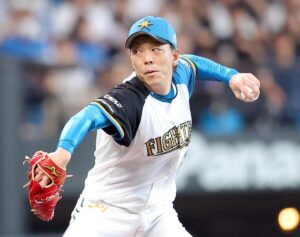
Improve your pitching form
Mastering the correct pitching form is essential to maximize a pitcher’s performance.
Effective pitching form is important for transferring power efficiently and preventing injury.
Here we will explain in detail the basics and importance of pitching form, how to practice to improve it, and how to check your form.
The Basics and Importance of Pitching Form
Elements of an effective pitching form
There are several important elements to pitching form.
First, a stable stance. Proper foot position and balance of weight are the basis of a stable form.
Next, use the angle of your arm and the snap. By keeping your elbow higher than your shoulder and using a snap of your wrist, you can improve your ball speed and control.
The rotation of the trunk is also important. By transmitting power from the center of the body, you can throw the ball more efficiently.
Practice methods to improve your form
Repetitive practice and feedback are essential to improving your pitching form.
Below are some specific practice methods.
- Drill practice : By repeating certain movements, you can help your body memorize the correct form. For example, there are drills that practice only swinging your arms without steps, and drills that focus on the movement of your lower body.
- Slow-motion pitching : Practice your pitching form with slow movements. This allows you to check and correct your finer details.
- Balance training : Using a balance board or standing on one leg, you can improve your body stability when pitching. By developing your sense of balance, you can acquire a stable form.
By consistently practicing these techniques, you can master the correct pitching form and improve your performance.
How to check your pitching form
Self-diagnosis and video analysis
Self-diagnosis and video analysis are effective ways to check your pitching form.
Self-diagnosis allows you to check your form in front of a mirror and be aware of the sensations you experience when throwing the ball to identify problems with your form.
On the other hand, video analysis involves recording your pitches and playing them back in slow motion to examine every detail of your movements.
Using video analysis software, the angle and speed of movements can be analyzed in detail.
Combining self-diagnosis with video analysis allows you to more accurately check and improve your form.
The role of coaches and trainers
Coaches and trainers play a very important role in improving your pitching form.
They have the experience and knowledge to objectively evaluate a player’s form.
Coaches and trainers monitor players’ form and provide appropriate feedback.
We also suggest specific improvement methods and training menus to help players effectively correct their form.
By receiving regular guidance from a coach or trainer, you can discover problems that you may not have noticed on your own and make effective improvements.
Continuing to practice with their expert advice will greatly contribute to your growth as a pitcher.
summary
Improving pitching form is extremely important for improving a pitcher’s performance.
By learning effective pitching form, you will be able to throw powerful and accurate pitches.
Self-assessment, video analysis, consistent practice and the guidance of a coach or trainer are the keys to success.
By understanding the basics and importance of pitching form and practicing the proper practice methods, you will be able to significantly improve your ability as a pitcher.

Use of mechanics and biomechanics
In order to maximize pitching performance, it is essential to understand and apply pitching mechanics and biomechanics.
Utilizing these scientific approaches can help optimize your throwing motion, improving force transfer and energy efficiency.
Here we will explain in detail the basic principles of mechanics and the application of biomechanics.
Basic Principles of Mechanics
Power transmission and energy efficiency
The fundamental principles of pitching mechanics focus on force transfer and energy efficiency.
Efficiently transferring the power generated when throwing to the ball enables fast and accurate throws.
Specifically, the following elements are important:
- Transfer of power from the feet to the ground : The throwing motion begins with the lower body. By planting the foot firmly on the ground and transferring the power of the lower body to the upper body, the maximum energy is generated for the throw.
- Trunk rotation : Use trunk rotation to transfer power to your arms more efficiently. A strong trunk rotation will improve arm speed and power.
- Shoulder and elbow movement : Proper shoulder and elbow movement improves the transfer of force and improves ball speed and control. Natural shoulder and elbow movement also improves pitching stability.
How to learn the correct mechanics
Repetition and feedback are key to mastering proper mechanics.
Below are some specific methods.
- Video analysis : Record yourself throwing the ball and watch it in slow motion to see how well you are transferring force.
- Drills : Repeated drills help you practice proper mechanics, such as step drills to improve lower body movement or twist drills to improve core rotation.
- Get guidance from a coach or trainer : Expert training is the best way to learn proper mechanics. It’s important to continue practicing with feedback from a coach or trainer.
Application of biomechanics
Scientific analysis of pitching motion
Biomechanics is the study of the scientific analysis of pitching motion to help improve performance and prevent injuries.
Specifically, we break down the pitching motion into small parts and analyze in detail the movement of each part and the transmission of force.
This provides data to help achieve an efficient pitching motion.
- Motion capture : Sensors are attached to the body to record your throwing motion in 3D, analysing the movement of each joint and the transfer of force, providing precise data to identify areas for improvement in your throwing motion.
- Force Plates : Ground reaction force measurement devices are used to analyze the forces transferred from your feet to the ground, allowing you to see how your lower body is moving and how efficiently it is transferring force.
Improve your form using biomechanics
Based on biomechanics data, you can scientifically improve your pitching form.
The specific ways to improve are as follows:
- Data-driven feedback : Based on data collected through motion capture and force plates, we provide specific feedback on areas for improvement. For example, if lower body movement is insufficient, we conduct drills to correct foot usage.
- Customized Training Programs : We create optimal training programs based on each athlete’s data, allowing them to efficiently improve their form and boost their performance.
- Continuous monitoring : Capture data regularly to see your progress as you improve. This will allow you to see if your form corrections are working and adjust your training program if necessary.
summary
Utilizing mechanics and biomechanics can be extremely effective in optimizing your pitching motion and improving your performance.
By combining learning proper mechanics with scientific analysis using biomechanics, you can achieve an efficient pitching motion and also prevent injuries.
By implementing these methods, you will be able to significantly improve your performance as a pitcher.
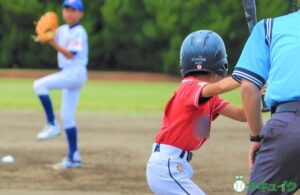
Pitching types and strategies
Pitching type and strategy are very important in a pitcher’s success.
By utilizing various pitching techniques and strategically facing the batter, you can gain an advantage in the game.
Here we will explain in detail the characteristics and effects of various pitching styles, as well as the pitcher’s strategies and psychology.
Characteristics and Effects of Various Pitching Techniques
Differences between fastballs, breaking balls, curveballs, etc.
There are many different types of pitching, each with their own characteristics and effects.
Below are some of the most common types of pitching:
-
Fastball : A fastball is the most basic pitch, thrown at high speed and in a straight line. Speed is important, and it makes the batter easier to hit by shortening his reaction time. It is also called a straight pitch.
-
Curveball : A curveball is a pitch whose trajectory changes while it is being thrown. Typical curveballs include the slider, changeup, and split finger. A slider changes its trajectory by sliding sideways, while a changeup is a pitch that slows down with the same arm swing as a fastball.
-
Curveball : A curveball is a type of pitch that curves significantly while being thrown. Some curve significantly vertically, while others curve diagonally. This has the effect of throwing off the batter’s timing.
Various pitching practice methods
In order to master effective pitching, you need a practice method that is tailored to the characteristics of each type of pitching.
Below are some specific practice methods.
-
Practice fastballs : In order to improve the speed and control of your fastball, it is important to practice throwing repeatedly. Set a target and aim to throw accurately. It is also effective to practice while measuring the speed using weight training and a speed gun.
-
Practice breaking balls : When practicing breaking balls, you need to pay attention to your grip and release point. Learn how to grip each pitch, such as a slider or changeup, and practice throwing with the correct release point. Also, use video analysis to check and improve your pitching form and ball trajectory.
-
Curveball practice : When practicing a curveball, the release point and wrist snap are important. To throw an accurate curveball, you need to master the proper release point and wrist movement. By throwing repeatedly, you can get a feel for it.
Pitcher Strategy and Psychology
Strategies for striking out batters
A pitcher’s strategy is essential to striking out the batter.
Here are some effective strategies:
-
Variation in pitch distribution : Throwing the same type of pitch repeatedly makes it easier for the batter to read your timing. It is important to mix up fastballs, curveballs, and curves to throw off the batter’s timing.
-
Using different zones : By using the strike zone up, down, left, and right, you can throw the ball away from the batter’s target. By using the inside and outside corners, you can throw balls that are hard for the batter to hit.
-
Attacking the batter’s weaknesses : It is also effective to analyze the batter’s past data and tendencies and attack their weaknesses. For example, pitch strategically to attack the inside of the pitch for a batter who is weak against inside pitches.
How to build mental toughness
Success as a pitcher also requires mental toughness.
Here are some ways to build mental toughness:
-
Mental training : Through mental training, you will learn how to stay focused and calm. Breathing techniques, meditation, and image training are all effective methods.
-
Positive thinking : By thinking positively, you can pitch with confidence. You will not be afraid of failure and will be able to focus on the next pitch.
-
Establish a routine : Having a routine before and during a match helps you maintain mental stability. Repeating the same movements and actions helps you stay focused.
summary
Pitching type and strategy are essential components to a pitcher’s success.
You can gain an advantage in the game by effectively using different types of pitches, such as fastballs, curveballs, and curves, and employing strategies to strike out batters.
Also, by developing your mental toughness, you will be able to withstand the pressure of a match.
By incorporating these elements together, you can maximize your potential as a pitcher.
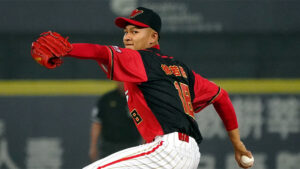
The importance of core training and flexibility
In order to maximize your performance as a pitcher, it is essential to strengthen your core and improve your flexibility.
These elements directly lead to a stable pitching form and injury prevention.
Here we will explain in detail the effects of core training and specific examples, as well as stretching methods to increase flexibility.
The effects of core training
The effect of strengthening the core on pitching
The core is the foundation for efficiently transferring power throughout the body.
A stronger core will increase your stability when throwing the ball, allowing you to throw with more power.
A strong core will also help prevent poor form and improve control.
Additionally, a strong core will help smooth out your entire throwing motion and reduce strain on your shoulders and elbows, which can help prevent injury.
Examples of core training
Effective core training can improve your performance as a pitcher.
The specific training methods are introduced below.
-
Plank : This is a basic core exercise where you rest your elbows on the floor and keep your body in a straight line. Aim to do this for 30 seconds to a minute, and increase the time as you get used to it.
-
Side plank : This side version of the plank will strengthen your obliques. Prop yourself on one elbow and keep your body in a straight line for 30 seconds to a minute, then repeat on the other side.
-
Bicycle crunches : Lie on your back and bring each knee toward your chest while bringing the opposite elbow toward the knee. This exercise works all your abdominal muscles.
-
Russian Twist : While sitting, raise both feet and twist your body from side to side. This exercise strengthens your entire core, focusing on your obliques.
Doing these exercises on a daily basis will strengthen your core and improve your stability and power when throwing the ball.
Stretching methods to improve flexibility
The Importance of Flexibility and Types of Stretching
Flexibility is very important for a pitcher. Flexible muscles and joints facilitate a smoother throwing motion and reduce the risk of injury.
Regular stretching is essential to improve flexibility.
Here are some effective types of stretches:
-
Dynamic Stretching : Dynamic stretching is suitable for warming up before pitching. Stretching the muscles while moving your body promotes blood flow and warms the muscles.
-
Static stretching : Static stretching is suitable for cooling down after pitching. It stretches the muscles in a certain position and increases flexibility.
A stretching routine for pitchers
By incorporating a stretching routine that is right for pitchers, you can improve your flexibility and optimize your performance.
Below are some specific routines:
-
Shoulder stretch : Extend one arm horizontally and pull it toward you with the other arm to stretch your shoulder muscles. Do this for 20 seconds on each side.
-
Chest stretch : Place one hand against the wall to open your chest and stretch your chest muscles. Do this for 20 seconds on each side.
-
Hamstring stretch : Extend one leg in front of the other and lean forward to stretch the hamstrings. Do this for 20 seconds on each side.
-
Hip stretch : Stand with your feet apart and place your back knee on the floor to stretch your hips. Do this for 20 seconds on each side.
By incorporating these stretches before and after pitching, you can increase the flexibility of your muscles and joints, allowing you to perform the pitching motion smoothly.
summary
Core training and improving flexibility are essential elements to maximizing your performance as a pitcher.
Strengthening your core will improve your stability and strength when throwing, while increasing your flexibility will help prevent injury and enable a smoother throwing motion.
Incorporate these training and stretches into your daily routine to maximize your potential as a pitcher.

Nutritional Management for Pitchers
Proper nutritional management is essential for a pitcher to perform at his best.
By getting the right nutrients, you can maintain your strength and stamina, and improve your concentration during a match.
Here we will explain in detail the nutrients required by pitchers and their effects, meal plans before and after games, and how to use supplements.
Performance-boosting nutrients
Nutrients needed by pitchers and their effects
There are several nutrients that are important for pitchers, each essential to support bodily function and improve performance.
-
Protein : This nutrient is necessary for muscle repair and growth. Because pitchers put a lot of strain on their muscles during the pitching motion, it is important that they consume enough protein. Good sources include meat, fish, eggs, and soy products.
-
Carbohydrates : They play an important role as a source of energy. Eating carbohydrates before a match can help improve endurance. They can come from rice, bread, pasta, fruit, etc.
-
Fats : We need them to provide sustained energy. Healthy fats will help you maintain your stamina. Recommended sources are nuts, avocados, and olive oil.
-
Vitamins and minerals : support a variety of bodily functions, particularly B vitamins that aid in energy metabolism and vitamins C and E that act as antioxidants. They can be obtained from vegetables, fruits, nuts and seeds.
Pre and post match meal plan
Meals before and after a game have a big impact on a pitcher’s performance, so it is important to take in nutrients at the right time and with the right content.
-
Pre-match meal : It is recommended to eat a balanced meal 2-3 hours before the match, ideally with a carbohydrate-heavy meal with adequate protein and fat – for example, chicken breast with a vegetable salad, whole grain pasta and fruit are good choices.
-
Post-match meal : After a match, eat a meal containing protein and carbohydrates to aid in recovery. To speed up your recovery, consume a protein shake, banana, yogurt, etc. within 30 minutes, then eat a balanced meal, such as grilled fish with brown rice and steamed vegetables.
How to use supplements
How to choose an effective supplement
Supplements are effective in making up for nutrients that are not being obtained in sufficient amounts from the diet.
It is important to choose supplements that are specifically effective for pitchers.
-
Protein : To support muscle repair and growth, a protein supplement is effective, commonly whey or casein protein.
-
BCAAs : Branched Chain Amino Acids (BCAAs) help prevent muscle breakdown and promote recovery, especially after training.
-
Creatine : Used to improve strength and power, creatine supplements help provide the energy needed for fast throwing movements.
-
Multivitamin : Helps to supplement vitamins and minerals not adequately obtained from the diet. Supports overall health and energy metabolism.
Key points for safe supplement use
To use supplements safely, it is important to follow these points:
-
Check the quality : Buy from a trusted manufacturer and choose supplements that have clearly labeled ingredients. It’s best to choose products that are certified by a third-party organization.
-
Proper Dosage : It is important to follow the dosage recommendations on the product label when taking any supplement. Excessive consumption may have adverse health effects.
-
Consult a Doctor or Nutritionist : It is recommended that you consult with a doctor or nutritionist before starting any new supplement, especially if you have pre-existing medical conditions or are taking other medications.
summary
Nutritional management for pitchers is directly linked to improved performance and injury prevention.
It is important to get a balanced intake of the right nutrients and stick to a meal plan before and after a match.
In addition, by effectively using supplements, you can replenish nutrients that cannot be obtained through diet alone and maintain your overall health.
Keep these nutritional management points in mind and maximize your ability as a pitcher.

Recovery and care methods
Recovery and care after training and games is essential to maintaining a pitcher’s performance and preventing injury.
Practicing proper recovery and injury prevention techniques will allow you to play at a high level for a long period of time.
Here we will go into more detail about post-training recovery and injury prevention and treatment.
Post-Training Recovery
Post-workout recovery process
The post-training recovery process is important to promote muscle repair and regeneration, and prepare your body for the next training or competition.
The recovery process includes the following steps:
-
Cool down : Doing some light cardio and stretching after your workout will help relax your muscles and increase blood flow, which will help prevent lactic acid build-up and reduce muscle soreness.
-
Fuel : Eat protein and carbohydrates within 30 minutes of training to help repair muscles and replenish energy. A protein shake, banana, or yogurt are good options.
-
Hydration : After training it is important to replenish lost fluids. Drinking water or a sports drink will help restore the body’s fluid balance and keep your muscles functioning properly.
How to promote recovery
To effectively promote recovery, it is recommended that you incorporate the following strategies:
-
Icing : Icing areas that take a lot of strain from pitching, such as the shoulders and elbows, can help reduce inflammation and speed up recovery. Wrap an ice pack in a towel and leave it on for 15 to 20 minutes.
-
Massage : Getting a sports massage can help relieve muscle tension and improve blood flow, which helps muscles repair and recover.
-
Sleep : Adequate sleep is paramount to the body’s recovery process. Getting at least eight hours of quality sleep boosts hormones that optimize muscle repair and growth.
Injury prevention and treatment
Common types of injuries for pitchers and prevention methods
The most common injuries for pitchers are shoulder and elbow injuries.
Below are some common injuries and how to prevent them.
-
Shoulder impingement syndrome : This is a condition in which the shoulder tendons rub against the bone, causing inflammation. As a preventative measure, it is important to incorporate shoulder stretches and core training.
-
Elbow medial collateral ligament injury (UCL injury) : This occurs when excessive strain is placed on the inside of the elbow due to repeated pitching movements. Effective preventative measures include learning the proper pitching form and managing the number of pitches.
What to do if you get injured and how to rehabilitate
If you are injured, it is important to take appropriate action quickly.
Below are some common treatments and rehabilitation methods for injuries.
-
Shoulder or elbow inflammation : First, rest and apply ice. It is important to avoid pitching until the inflammation has subsided. See a doctor and use anti-inflammatory medication if necessary.
-
Rehabilitation : When recovering from an injury, it is important to follow a specialized rehabilitation program, supervised by a physiotherapist, which involves stretching, light strength training and gradually increasing resistance.
-
Gradual return : When returning to pitching after recovering from an injury, it is necessary to gradually increase the load. Start with light pitches at first, and gradually increase the intensity and number of pitches. Aim to return without overdoing it under the guidance of a doctor or trainer.
summary
Post-training recovery and injury prevention are crucial to maintaining a pitcher’s performance and long-term health.
Practicing proper recovery methods and adopting injury prevention strategies will help you continue to play at a high level.
By understanding these points and incorporating them into your daily training and care, you can maximize your ability as a pitcher.
